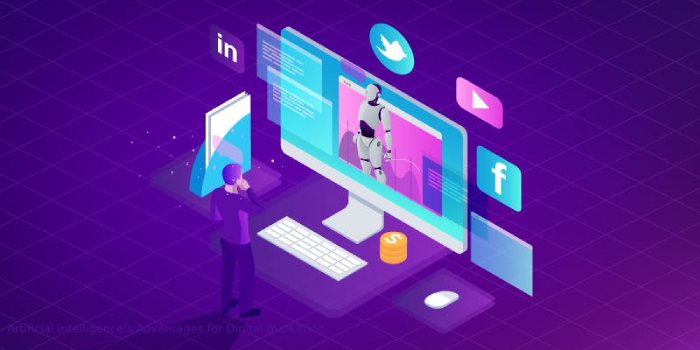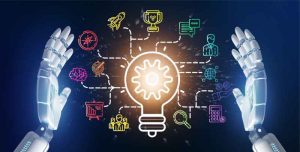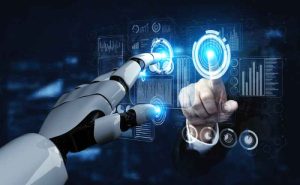Artificial intelligence’s Advantages for Digital marketing

Artificial intelligence's Advantages for Digital marketing
Artificial intelligence is the term used to describe the development of intelligent machines that can carry out cognitive functions. Once they acquire enough information, they can think more like humans. Artificial intelligence, data, and analytics are crucial in digital marketing.
Any internet business that wants to prosper needs to be able to draw the appropriate conclusions from data. It makes sense to think that AI will play a significant role in digital marketing. This is especially true in light of the massive increase in data and sources that digital marketers must comprehend.
According to experts, the amount of data gathered from these more recent customer touchpoints will eventually become overwhelming. Over the coming years, this will continue to occur as firms expand. More than ever, artificial intelligence (AI), which analyses data and makes decisions for digital marketing, is crucial. Here are a few explanations for why AI tools and technologies have access to vast volumes of hard-to-access data. AI can transform this data into insightful knowledge that enables quick decisions.
Table of Contents
Marketing for content with AI
In several industries, content-based marketing is now the most widely used form of advertising. This results from social media marketing’s growth and customers’ rising desire for online content.
You can use artificial intelligence to identify the topics your potential and current consumers are interested in. It can also decide how to get there most effectively.
Advertising creatives have always aimed to create advertisements that inspire sharing and word-of-mouth. Today, a variety of AI-powered solutions can be used to do this. By creating headlines, algorithms can also be used. Metrics can be improved by monitoring their performance and modifying their output. Email open rates and social media post-sharing rates are two examples of these measures.
AI is growing capable of overseeing the entire content creation process and can produce graphics and content that it anticipates its target audience will find appealing. With personalization, customers can get content that is specially crafted for them. To comprehend what clients are looking for, AI leverages data and references. Personalization is a popular term in business.
The usage of AI in figuring out where a customer is in the buying process is growing. It may provide something that will distinguish you from your rivals. When a user is “shopping around” for goods or services, it recognizes this and compares the options. If it sees that a customer is going to make a purchase, it might send them time-sensitive advertisements. This advertising compels viewers to take advantage of a limited deal right away.
Live Monitoring
Users may see the effectiveness of their content and change their approach in real-time using platforms that include AI. Because of this, digital marketers can immediately observe the results and modify their next course of action.
Digital marketers may simultaneously monitor the stats for several postings with various types of content. The outcomes can be compared and tabulated. This enables users to identify the least effective content and promote the most helpful content to their clients, saving both time and money.
Adaptive Pricing
Offering discounts is a terrific strategy to boost sales. However some customers could decide to make a transaction with little or no discount.
To boost sales and profitability, artificial intelligence can adjust product prices dynamically. This is done based on variables like client profiles, demand, supply, client, and other criteria. A graph displays each product’s pricing. since It will demonstrate how it varies concerning the season, consumer demand, and other elements.
Frequent travelers have provided an excellent illustration of dynamic pricing. They reserve a flight, only to discover when they return to pay for it a few days later that the cost has increased by a few hundred dollars.
Greater Safety
AI-based biometric authentication systems are among the most secure ones for data gathering and transfer. The efficiency of the sharing process has also risen.
Large data sets can now be exchanged far more securely than in the past. Large volumes of data may now be more easily analyzed thanks to modern data collecting and dissemination methods. Faster decision-making and better insights have resulted from this.
Since data is the foundation of personalized customer experiences, organizations can more securely protect client data by using biometric authentication. Digital marketing data may be kept relevant and valid with AI technologies.
Customer service chatbots
Customers engage with businesses through messaging services like WhatsApp and Facebook Messenger. Maintaining active customer support reps on these platforms can be expensive.
Some firms utilize chatbots to reply to client inquiries quickly. Customers can receive prompt responses from chatbots, which lightens the workload and speeds up the process. Additionally, chatbots can be programmed to offer predetermined responses to frequently requested inquiries. Complex inquiries can be forwarded to human operators by chatbots.
This means less time spent on customer service. By making it simpler for the agent to handle situations that call for a customized response, you also lessen their workload.
People are becoming more accustomed to chatbots like Siri, Google Assistant, and Cortana. They occasionally favor chatbots over actual people. Algorithms for AI word recognition have come a long way recently. This has made it possible for machines to take the position of human salespeople and customer service agents.
Chatbots can handle client issues faster and are less expensive than adding more team members. They might even be more humane in some situations. Humans experience unpleasant days, but bots don’t. They are personable, amiable, and simple to like.
Your digital marketing plan can be made better with the aid of artificial intelligence. A marketer or an advertiser’s job is not eliminated by artificial intelligence. Moreover, they are assisted by artificial intelligence in maximizing their strategic and creative abilities. For them and their clients to succeed, marketers and advertisers must modify their marketing plans and procedures to keep up with the most recent AI advancements.
Also read:- Artificial Intelligence Changes the World of Online Relationships




